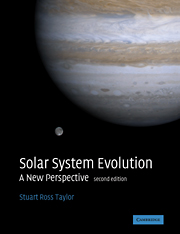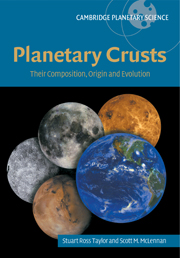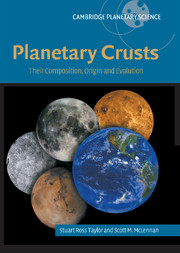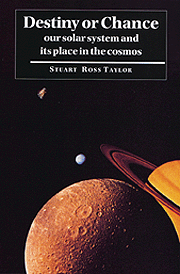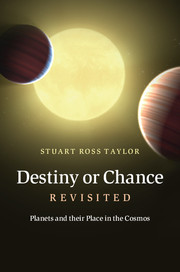Solar System Evolution
This completely rewritten new edition begins with an historical perspective of the place of the solar system in the universe. Evidence from meteorites is used to describe how the planets were formed and the giant planets are considered in the light of the discovery of new extrasolar giants. Other chapters discuss satellites, comets, centaurs, asteroids and why Pluto is not a planet. Explanations on why Earth and Venus turned out so differently, and how Mars and Mercury are the survivors of many similar bodies, are also discussed. The formation of the Moon in a giant impact leads to an assessment of the importance of collisions and impacts in the solar system. It is concluded that our solar system is the end product of many accidental and chance events. This leads to the philosophical discussion of whether planets like our Earth are likely to be found elsewhere in the universe.
- Unique overview incorporating latest research
- Provides a complete synthesis of our present knowledge about the solar system
- Discusses the new extrasolar giant planets and asks whether planets like our Earth are likely to be found elsewhere in the universe
Reviews & endorsements
' … the book should serve as an excellent reference; it succinctly summarizes evidence and arguments.' Nature
' … an invaluable guide to current thinking on the Solar System evolution.' Journal of the British Astronomical Association
' … few finer introductions than this book.' The Times Higher Education Supplement
'S. Ross Taylor has written a clear and comprehensive account of the origin and evolution of the solar system … frequent summaries are useful, and provide ready access to information for readers who simply wish to dip into the book. I highly recommend this book to all students of planetary science.' Chemical Geology
'… I hope the book reaches many students embarking on a career in geochemistry or, perhaps more important, provides the basis for some courses presented by their teachers.' The Observatory
'An exploration in imagination could be one way to describe the contents of this book. It adopts an historical perspective to examine the place of the Solar System in the Universe … the book is fascinating and brings the wonders of our solar system closer to home … if you have ever wondered how the Sun formed, where did the planets come from and what is a comet or meteorite, then this book has answers.' James Montgomery, Geoscientist
Product details
August 2005Paperback
9780521675666
488 pages
246 × 189 × 25 mm
0.86kg
172 b/w illus. 39 tables
Available
Table of Contents
- Preface
- Acknowledgements
- Prologue
- 1. A brief history
- 2. The universe
- 3. Stars
- 4. The solar nebula
- 5. Composition and chemical evolution of the nebula
- 6. The evidence from meteorites
- 7. Building planets
- 8. The giant planets
- 9. Satellites and rings
- 10. The refugees
- 11. The survivors: Mercury and Mars
- 12. The twins: Venus and the Earth
- 13. The Moon
- 14. The role of impacts
- 15. Epilogue: on the difficulty of making Earth-like planets
- Subject index
- Author index.

